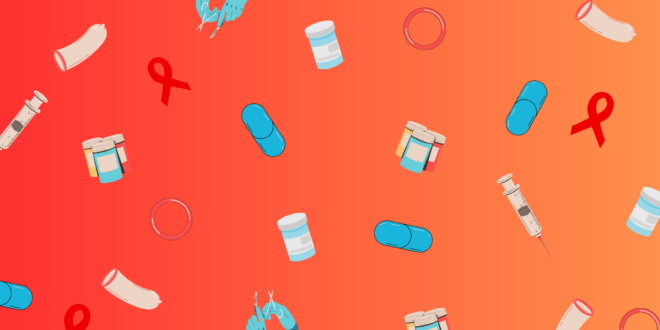Pre-exposure prophylaxis, commonly known as PrEP, is a revolutionary advancement in HIV prevention. It involves the use of antiretroviral medications by HIV-negative individuals to significantly reduce their risk of contracting the virus.
PrEP creates a protective barrier that blocks the virus’s ability to establish a permanent infection in the body, effectively preventing its transmission if exposed to the virus. By taking a daily dose of PrEP, individuals can proactively safeguard themselves against the risk of HIV infection, making it a powerful tool in the fight against HIV/AIDS.
Identifying the Key Populations at Risk for HIV Infection
HIV transmission is not uniform across all populations, and certain groups face a higher risk than others. Identifying these key populations is crucial for developing targeted HIV prevention strategies that effectively address their unique needs and vulnerabilities.
Various factors contribute to the heightened risk of HIV infection within these groups, including specific behaviors, socio-economic factors, and access to healthcare resources.
Men who have sex with men (MSM)

Men who have sex with men (MSM) continue disproportionately being affected by HIV. In many regions, MSM accounts for a significant proportion of new infections. Factors contributing to the increased risk among MSM include a higher prevalence of HIV within this community, multiple sexual partners, inconsistent condom use, and social stigma surrounding homosexuality and HIV/AIDS.
The stigma may discourage some MSM from accessing HIV prevention and care services, increasing their vulnerability to infection. PrEP has proven to be highly effective in reducing the risk of transmission among MSM when used correctly and consistently.
Intravenous drug users (IDUs)
Intravenous drug users (IDUs) are another critical population facing a substantial risk of HIV infection. Using contaminated needles and injection equipment during drug use significantly contributes to HIV transmission among IDUs.
Harm reduction strategies, such as needle exchange programs and providing access to sterile injection equipment, are essential in reducing the risk of transmission among IDUs and improving their overall health outcomes. Additionally, offering PrEP to IDUs can provide additional protection, empowering them to take control of their sexual health and reducing the risk of HIV acquisition.
Serodiscordant couples

Serodiscordant couples are those in which one partner is HIV-positive and the other is HIV-negative. These couples face unique challenges in preventing HIV transmission within their relationship. While safer sex practices, such as consistent condom use, can reduce the information risk, they may not always be feasible or desirable for every couple.
PrEP offers additional protection for the HIV-negative partner, reducing the fear and anxiety surrounding sexual intimacy. It is a valuable prevention tool for couples seeking to maintain a healthy, HIV-free relationship.
Commercial sex workers and their clients
Commercial sex workers and their clients from another critical population are at risk for HIV infection. The nature of their work exposes them to multiple sexual partners, increasing the potential for HIV transmission.
PrEP is a crucial prevention tool in this context, protecting sex workers and their clients from contracting and spreading the virus. By providing PrEP to commercial sex workers, we can empower them to take charge of their health and well-being and reduce their vulnerability to infection.
Evaluating Additional Factors That Contribute to Individual Risk Assessment for PrEP Eligibility
While identifying key populations is vital, individual risk assessment is equally essential in determining PrEP eligibility. Risk assessment tools consider various factors, including sexual behaviors, condom use, history of sexually transmitted infections (STIs), and other socio-economic factors that may contribute to an individual’s risk of HIV infection.
Additionally, medical professionals evaluate other health-related criteria to ensure that PrEP is a safe and suitable prevention strategy for each individual.
Read more about clamydia as sexually transmited infection.
The Importance of Education and Access to PrEP Services in Reaching At-Risk Populations

Promoting awareness of PrEP benefits and availability is crucial to reach at-risk populations effectively. Educational campaigns play a significant role in dispelling misconceptions and reducing the stigma surrounding PrEP usage.
By increasing knowledge and understanding of PrEP’s role in HIV prevention, individuals within key populations can make informed decisions about their sexual health. Moreover, establishing PrEP clinics and expanding PrEP services are essential steps in improving accessibility, ensuring that those who need PrEP can readily access this life-saving prevention method.
By overcoming barriers to PrEP access, such as cost and limited availability, healthcare authorities can increase PrEP uptake and coverage among at-risk populations, significantly reducing new HIV infections.
Additionally, efforts should be made to address systemic inequalities and discrimination that may hinder access to PrEP services for specific people, ensuring equitable access for all individuals at risk of HIV infection.
Final Thoughts: Improving PrEP Uptake Among Those at Risk for HIV Infection
Identifying key populations at risk for HIV infection is pivotal in directing practical HIV prevention efforts. By focusing on at-risk groups like MSM, IDUs, serodiscordant couples, and commercial sex workers and their clients, targeted interventions can be implemented to combat HIV transmission within these vulnerable communities.
Equally important is the need for personalized risk assessment to ensure individuals with varying risk levels can access PrEP.
Through education, awareness, and enhanced accessibility to PrEP services, we can make significant strides in preventing new infections and empowering those at risk to take control of their sexual health.
By working collaboratively, healthcare authorities, community organizations, and individuals can strive toward an HIV-free future for all. It is crucial to continue advocating for comprehensive prevention strategies that are inclusive, respectful of diverse needs, and address the social determinants of health that influence HIV vulnerability. Only by implementing a holistic and evidence-based approach can we make meaningful progress in the fight against HIV/AIDS and work towards ending the epidemic.
 Imagup General Magazine 2024
Imagup General Magazine 2024



